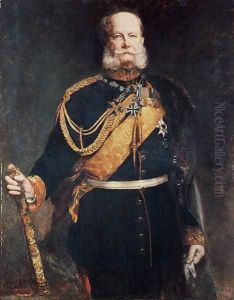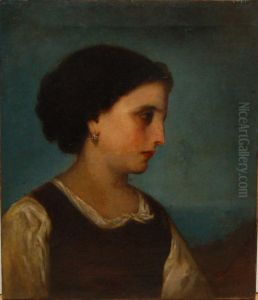Gottlieb Biermann Paintings
Gottlieb Biermann was a German painter and illustrator, born on February 17, 1824, in Breslau, Silesia (now Wrocław, Poland). He was known for his genre paintings, portraits, and landscapes, which were characteristic of the Biedermeier style—a term that describes the artistic style that flourished in the German-speaking countries of Europe during the period 1815-1848, characterized by a certain degree of simplicity and a focus on middle-class life.
Biermann studied at the Royal Academy of Art in Berlin, where he was influenced by the teachings of prominent artists of the time such as Wilhelm von Schadow and Karl Friedrich Schinkel. He spent a significant part of his career in Berlin and was an active member of the Berlin art community. He exhibited his works at various art exhibitions, including those at the Prussian Academy of Arts.
Throughout his career, Biermann painted various subjects, but he was particularly lauded for his ability to capture the essence of his sitter in portraits and the atmospheric quality in his landscapes. His works are characterized by their detailed execution and often contained sentimental or patriotic themes, reflecting the tastes of the burgeoning middle class in Germany during his time.
Biermann's paintings were quite popular in his era, and he received numerous commissions from the bourgeoisie as well as from the Prussian court. Despite the popularity he enjoyed during his lifetime, his work, like many of his Biedermeier contemporaries, was later overshadowed by the more dramatic movements of late 19th-century art, such as Impressionism and Expressionism.
Gottlieb Biermann passed away on October 19, 1908, in Berlin. Although not as widely known today, his paintings can still be found in art collections and museums, and they continue to provide insights into the cultural and social milieu of 19th-century Germany. His legacy is preserved in the form of his contribution to the Biedermeier style and his role in the German art scene of the time.






